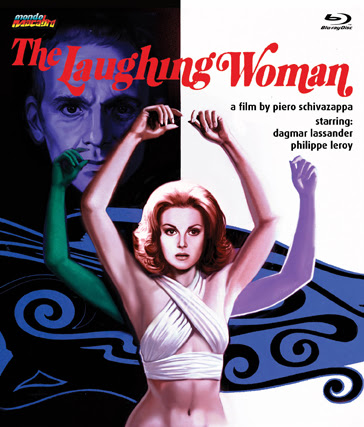The Laughing Woman aka The Frightened Woman is a 1969 film from director Piero Schivazappa. It combines elements of the pop-art style that was popular at the time with the revenge thriller, comedy, and bondage elements to create a unique cinematic cocktail.
The film opens with a prostitute being left on the side of the road to deal with welts and cuts from her recent encounter with a client. Soon after the film cuts to the office of Dr. Sayer, who was the “John” of that scenario. Maria (the always wonderful Dagmar Lassander) is at his office to collect some information regarding male sterilization, he doesn’t have it on hand, but can get it. She suggests collecting it from his home that evening, and that’s where things go awry.
Upon arriving at the house she is given a spiked drink, rendered unconscious, and made to be a prisoner of Dr. Sayer’s bondage. He lectures her, and tells her that she is the next victim in line that he will pleasure and kill at the height of orgasm (dude has an ego). Of course, these plans are subverted as Maria, works to become more to him than a simple sex slave.
During the early portions of the film when the pair where basically lecturing each other on sterilization and virility, and even soon after when Maria become a prisoner of Dr. Sayer I was not overly sure I was going to get into this one, and then Maria started dancing, and The Laughing Woman started to turn around and sort of took on a life that I hadn’t expected. From here on in, it becomes a sort of domestic battle between Sayer, played sternly, but with increasing sweetness with a touch of stern by Philippe Leroy. The set design here is wonderful, and looks like a pop-art explosion. The direction from Schivazappa has a distinct vision and keeps the pacing solid.
Mondo Macabro presents The Laughing Woman in a splendid 1080p transfer derived from a 4k scan from the negative, and it looks it. Colors pop, textures are excellent, flesh tones are accurate. There is nothing really to nit pick here. There is English and Italian audio that sounds clear and crisp. Extras include a fantastic commentary by Kat Ellinger, a video essay on the design of the film by Rachael Nisbet, and an animated photo piece by Jacques Spohr. Trailers are also included. RECOMMENDED.

